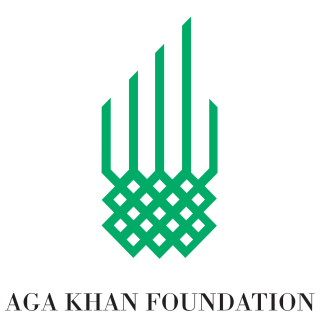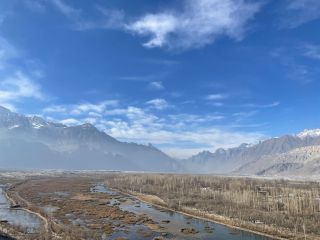*** Trips to Balochistan and most of Sindh are best done between November and March. From April to September it is too hot, especially in the desert areas.
*** Know that itineraries can always change, we try to do our best to see as much as possible.
Pakistan has the second-highest muslim population in the world after Indonesia. But before the arrival of Islam, the country which is now known as Pakistan, was home to a number of different religions with Buddhism and Hinduism being the most dominant ones and also several smaller religions such as Zoroastrianism, Sikhism, Bahaism, Kalash, Jainism, Judaism and others. Although dominantly Sunni, there are also large groups of shiites, such as the Ismaili Shia followers with Aga Khan as their sole imam.
Pakistan’s Islam is different than the way it’s practiced in the Arab world as it leans more towards Sufism, a mystical Islamic tradition. The best example is the culture of shrines and there are still many pre-Islamic traditions and remnants present. The most famous sufi shrines are Ali Hajweri in Lahore and Shahbaz Qalander in Sehwan which attract weekly gatherings and annual festivals in which Sufi music and dance is present.
Our tour starts in Karachi, located next to the Indian Ocean, from where we’ll gradually go up north passing Hyderabad, Islamabad, Lahore, all the way to Karimabad and driving back to Islamabad through Peshawar. It is an intense, very detailed and complete trip which will give you great insights in local culture, history and traditions. It will also allow you to interact with the locals and make friends.
Day 1: Karachi
On your first day you will be shown around in the coastal city of Karachi. One of the most important places we’ll visit is Mohatta Palace, built in 1927 by a Hindu businessman and preserved perfectly. Another stop is Frere Hall in which the painted ceilings by Sadequain are the highlight. We’ll also stop by the Flag Staff House and the Zainab Market in the old part of Karachi. An excellent stop to try some local delicacies!
Day 2: On our way to Hyderabad, we’ll stop in Thatta, home to the Makli Necropolis, one of the largest funerary sites in the world, with approximately 500,000 to 1 million tombs built during a four century period. We can find many large funerary monuments from royals, sufi saints, poets and intellectuals. It is one of the most important UNESCO World Heritage sites in the province. Many of the tombs feature carved decorative motifs and the funerary architecture of the largest monuments houses Muslim, Hindu, Persian, Mughal, and Gujarati influences. We’ll have a visit to the Shah Jahan Mosque, built in 1647 AD by the Moghal Emperor Shahjehan. We’ll continue to Hyderabad, where we’ll stay for the night.
Day 3: Today we’ll have a full city tour of Hyderabad and the surrounding sites and hidden gems and we’ll stay another night at the hotel.
Day 4: On our way to Sukkur we will visit the Ranikot Fort, located in the Kirthar National Park. The Ranikot fort is built on the hills in the north-east of the park and is one of the largest forts in the world and with its 10 meter walls made from lime-cut sandstone it’s 26 km in circumference. Overnight in Sukkur.
Day 5: Next on the menu is Mohenjo-Daro, an ancient city built around 2600 BCE and once the largest civilization in the Indus Valley. The entire site is built by unbaked brick and shows sophisticated city planning with areas for commercial shops, residences, wells, public houses and systems of sanitation and drain management. It is the most ancient and best-preserved urban archeological site in the Indian subcontinent and a great experience. We’ll drive back to Sukkur passing through Shikarpur.
Day 6: Today we’ll visit Bahawalpur, which has a rich architectural heritage and is known for its monuments dating from the 18th and 19th century. It is located at the edge of the Cholistan Desert and the Lal Suhanra National Park. The park was founded in 1972 and is a wildlife refuge home to many mammal species and birds, including the chinkara gazelle. Black bucks have also been re-introduced. There is also a pair of Indian rhinoceros which have been brought over from Nepal.
Day 7: Today we’re going to one of the most iconic places in all of Pakistan. We’re going to the Cholistan Desert and visit the Derawar Fort and the Abbasi Mosque. The bastions of Derawar are visible from many kilometers away and are up to thirty meters high. It is an impressive sight in the middle of the desert. The fort was built in the 9th century AD and taken over by Muslim Nawabs in the 18th century who rebuilt it in its current forms. Overnight in Bahawalpur.
Day 8: In the morning we’ll drive to Multan, with a stop in Uch Shariff. Uch, also called Uuch Sharif is a historic city not too far from Multan and was founded by Alexander the Great during his invasion of the Indus Valley and was an important metropolitan center between the 12th and 17th century and home to many Muslim refugees. It is famous for its shrines built in the typical Southern Punjab architectural style by Muslim mystics. The Uch Monument Complex is home to 1.400 graves and three shrines.
We’ll have a tour in Multan, one of the oldest cities in Pakistan and once part of ancient India. It has a long history and was renown for the Hindu Multan Sun temple and was besieged by Alexander The Great. Multan was one of the most important trading centers during medieval Islamic India and home to many Sufi mystics during the 11th and 12th century earning the title ‘City of Saints’. The city, together with Uch, is known for the many Sufi shrines. After our tour we’ll stay in a hotel in Multan.
Day 9: Next on the agenda is Lahore, but not without a visit to Harappa on the way. Harappa is an archaeological site in Punjab, the site of the ancient city contains the ruins of a fortified city from the Bronze Age and was part of the Indus Valley Civilization centred. The city had roughly 23,500 residents living in clay brick houses at its peak during the Harappan phase (2600 BC – 1900 BC). During British rule, many bricks were looted to be used for the railway between Lahore and Multan and many archeological artifacts have been stolen. We’ll stay in Lahore for the night.
Day 10: Today we’ll have a full day tour of Lahore.
We will visit the Tomb of Jahangir, a 17th century mausoleum built for the Mughal emperor Jahangir. Dating back to 1637, the mausoleum is located in Shahdara Bagh in Lahore, Punjab, Pakistan, along the banks of the Ravi River. The site is famous for its interiors which are elaborately decorated with frescoes and marble, and its exterior which is richly decorated with pietra dura. The tomb, along with the adjacent Akbari Sarai and Asif Khan’s tomb, are part of an ensemble that is currently on the Tentative List of UNESCO World Heritage Sites.
Also on our list today is the Tomb of Nur Jahan, a 17th-century mausoleum, which was built for the Moghul Empress Nur Jahan. The marble of the tomb was looted during Sikh times in the 18th century for use at the Golden Temple in Amritsar. The red sandstone mausoleum, along with the nearby tomb of Jahangir, the tomb of Asif Khan and Akbari Sarai, is part of an ensemble of Mughal monuments in Lahore’s Shahdara Bagh.
The Vazir-Khan Mosque is a 17th century mosque in the city of Lahore, the capital of the Pakistani province of Punjab. The mosque was inaugurated during the reign of the Mughal emperor Shah Jahan as part of an ensemble of buildings that also included the nearby Shahi Hammam baths. Construction of the Wazir Khan Mosque began in 1634 C.E. and was completed in 1641. It is considered as the most ornately decorated mosque of the Mughal era.
Day 11: On our way to Rawalpindi, we will visit the Rohtas Fort and Maikyala Stupa. We’ll stay overnight in either Rawalpindi or Islamabad. The fort is near the city of Jhelum and still in the Punjab province. The fort is known for its large walls and gateways and is listed as a UNESCO World Heritage Site.
Day 12: After breakfast we’re already on our way to Besham, en-route we’ll have a stop in Taxila. Taxila, meaning ‘City of Cut Stone’, is an archaeological site about 25 km northwest of Islamabad. Taxila was an important city of Ancient India with origins going back to 600 BCE and has been in the hands of several empires as it was an important crosspoint for ancient trade routes. It was eventually destroyed in the fifth century and declared as a UNESCO World Heritage Site in 1980. We’ll spend the morning here and will bring you back to Islamabad around noon. Tonight we will stay in Besham.
Day 13: Today we’ll have a long drive to the town of Gilgit in the province of Gilgit-Baltistan, the beautiful northern province of Pakistan. We’ll stay overnight here.
Day 14: On our way on the scenic route to Karimabad we’ll have a stop at the Kargah Buddha carvings, dating back to the 7th century as Gilgith used to be a prominent center of early Buddhism.
Day 15: After breakfast we’ll have an excursion to the Nagar Valley and we’ll have an excursion at the Baltit Fort. Baltit Fort, an ancient fort in the Hunza Valley and founded in the 1st century. In the past, the survival of the feudal Hunza regime was ensured by this fort which dominates Karimabad. The foundations of the fort date back 700 years, with some reconstructions and alterations over the centuries. In the 16th century, the local prince married a princess from Baltistan who brought with her Balti master craftsmen to renovate the building (as agreed for her dowry). The architectural style clearly shows the influence of Buddhist Tibet in Baltistan at that time.
The Hunza Mirs abandoned the fort in 1945 and moved to a new palace down the hill. The fort began to deteriorate, leading to fears that it was falling into disrepair. Following a study by the Royal Geographical Society of London, a restoration program was initiated and supported by the Aga Khan Trust for Culture for its Historic Cities Support Programme. The program ended in 1996 and the fort is now a museum run by the Baltit Heritage Trust.
Day 16: Today we’ll have a full day exploring the Khunjerab Pass going all the way to the border with China. This beautiful road takes us through Khunjerab National Park where snow leopards, wolves, ibex and bears roam. The road goes through dramatic rock formations and cliffs and offers wonderful views on snow-capped mountains. It’s a truly satisfying day. Overnight in Karimabad.
Day 17: Today we’ll have a 7 hour drive to Chilas, where you’ll have a free evening.
Day 18: We’ll have a scenic drive through the Shangla Pass all the way to Swat, where we’ll stay for the night. Today is a day for admiring the beautiful landscape of the area with many photo-opportunities along the way.
Day 19: Today is another scenic road trip all the way to the city of Peshawar. We will have a visit at Takht-E-Bhai. Takht-i-Bahi is the ruins of a former Buddhist monastery from the Gandhara period in the Pakistani province of Khyber-Pakhtunkhwa. The name Takht-i-Bahi means Water Throne in Urdu. The complex is located on a hill with a water source. The monastery was probably built as early as the 1st century BC. Most of the buildings within the complex date from the 6th and 7th centuries. Inside the monastery is a stupa surrounded by 35 smaller stupas. In 1980, the complex, along with the nearby ruined city of Sahr-i-Bahlol, was added to the UNESCO World Heritage List.
Day 20: After breakfast we’ll have an excursion to the Khyber Pass. The Khyber Pass is the main mountain pass connecting Pakistan and Afghanistan. The pass has been an important trade route between Central Asia and South Asia over the centuries, as well as a strategic military location. The top of the pass is at Landi Kotal in Pakistan, five kilometers from the border between the two countries. The mountain pass cuts through the mountains of Safed Koh, a southern spur of the Hindu Kush Mountains.
According to a number of versions of the Aryan invasion theory, the Indo-Aryans migrated to India via the Khyber Pass. The first recorded invasion of the Indian Peninsula via the Khyber Pass was led by Alexander the Great. Muslim armies also invaded the peninsula in the early Middle Ages via this mountain pass. This eventually culminated in the foundation of the Mughal Empire in 1526. The British invaded Afghanistan from India through the Khyber Pass.
Members of the Pashtun Afridi tribe live around the Khyber Pass. To the north live the Mullagori Afridis, to the south the Tirah Afridis. The Pathans, especially the Afridis and Shinwaris in Afghanistan, have considered the Khyber Pass as their territory over the years. The main source of income for these tribes was tolls in exchange for safe passage. According to George Molesworth, adjutant in the British Army during the Third Anglo-Afghan War, “every stone in the Khyber Pass was drenched in blood.” Rudyard Kipling called the pass “a sword that cuts through the mountains.”
Around the 1960s, many hippies crossed the Khyber Pass on their journeys through Afghanistan to India. In the twenty-first century, the Khyber Pass is still of great strategic importance, as witnessed by the many casualties in this area in the fight against militants. The pass is on the supply route for Western troops stationed in Afghanistan.
Day 21: Today we’ll have a full day excursion to the smuggler’s bazar in Peshawar, followed by an in-depth guided tour to the historical part of the city. Today you can also take your PCR-test
Day 22: You can either fly out on an international flight from Peshawar or fly to Islamabad or Karachi from where you can take a connecting flight. End of tour.
Includes:
– All activities as described, including entrance fees
– Transport in a comfortable car, adapted to the size of your group
– Professional local English speaking guide, government licensed
– Accommodation
– Breakfast where available
Doesn’t include:
– Dinner and lunch
– International flights
– Drinks
Price:
1 person: 7.999 usd
2 persons: 4.190 usd per person
3 persons: 3.795 usd per person
4 persons: 3.245 usd per person
** single supplement: 1.300 usd










